Post Modernism: Philip Johnson, Robert Venturi and Daniel Libeskind
9.6 Post-Modernism in action
Individual activity: Post-Modernism in action
There follows a number of notable examples of Post-Modern architecture as it has come to be practised during the 1970s and 1980s. Examine each of these and in each case consider how successfully this architectural style fulfils the ambitious theoretical programme which was set out for it by Venturi and Jencks. You may also like to ask yourself whether or not you consider this to be good architecture.
You may want to make a note of your thoughts, as you may want to refer back to them later for subsequent discussions.
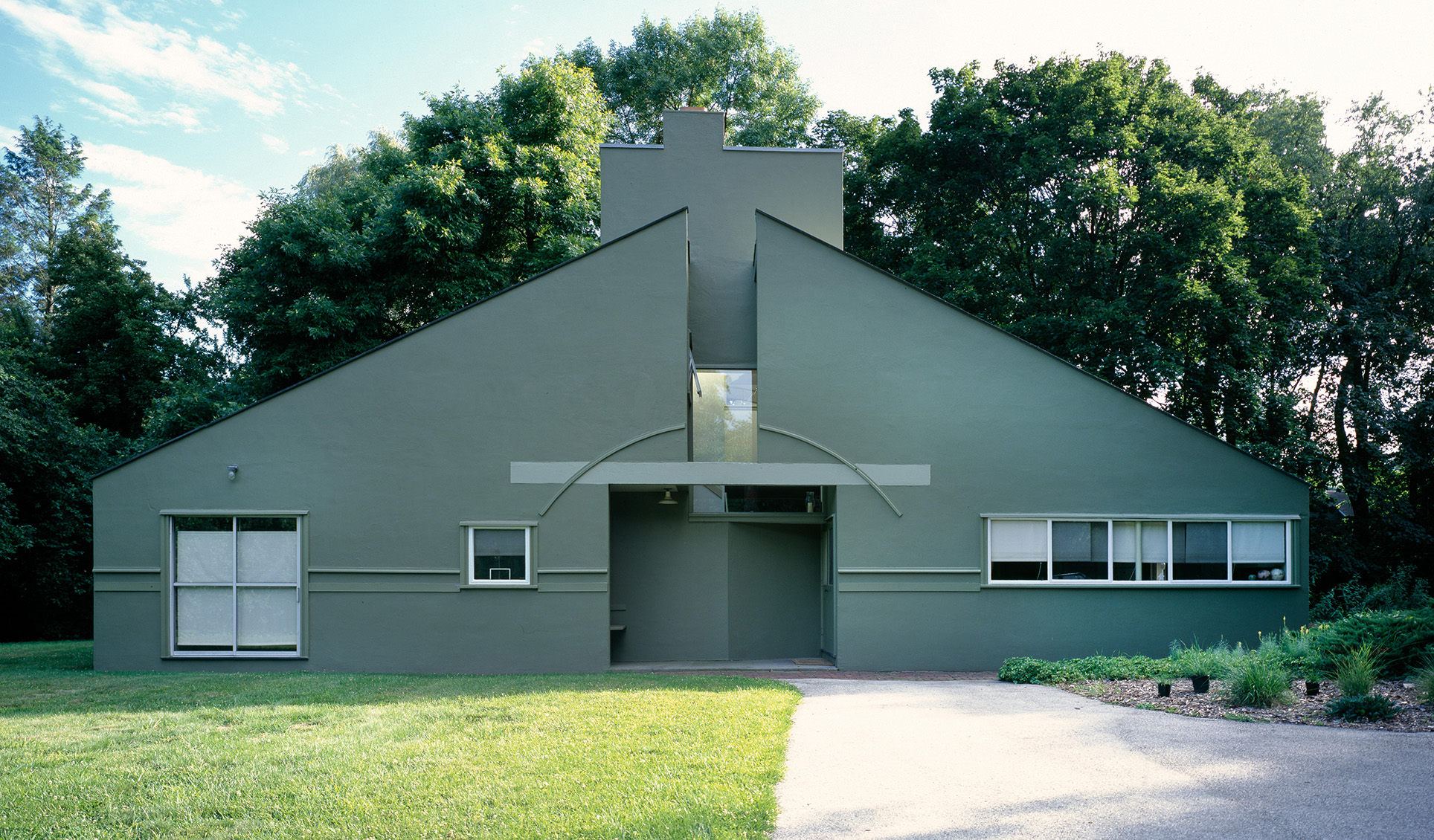
Robert Venturi: Vanna Venturi House, Philadelphia (1962)
Alpha Stock / Alamy
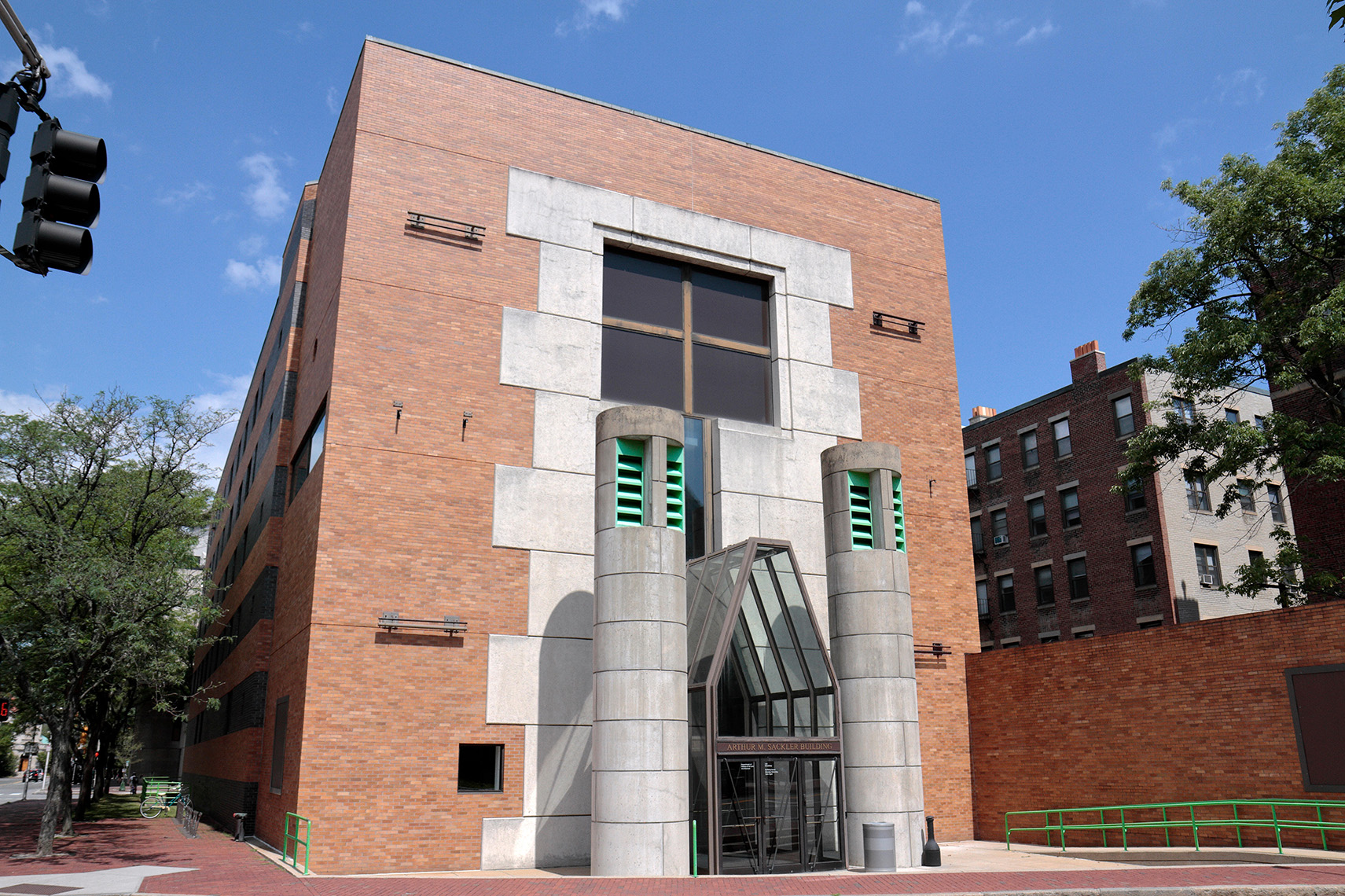
James Stirling, Michael Wilford & Associates: Arthur M. Sackler Museum; main entrance, Harvard University, Cambridge, MA (1982)
Maurice Savage / Alamy
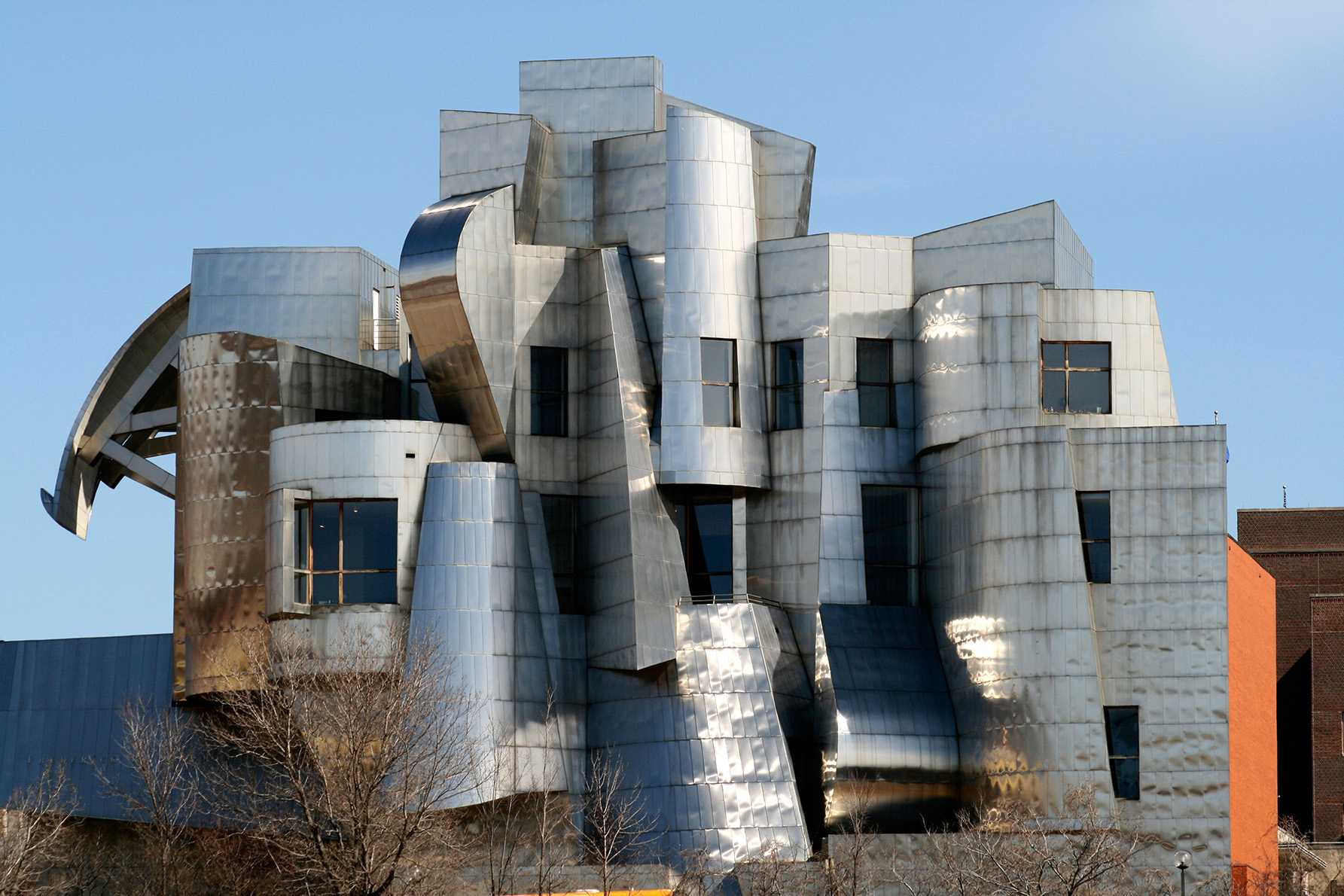
Frank Gehry: Frederick R. Weisman Art Museum: exterior, view from southwest, University of Minnesota. Minneapolis (1990-1993)
Steve Skjold / Alamy
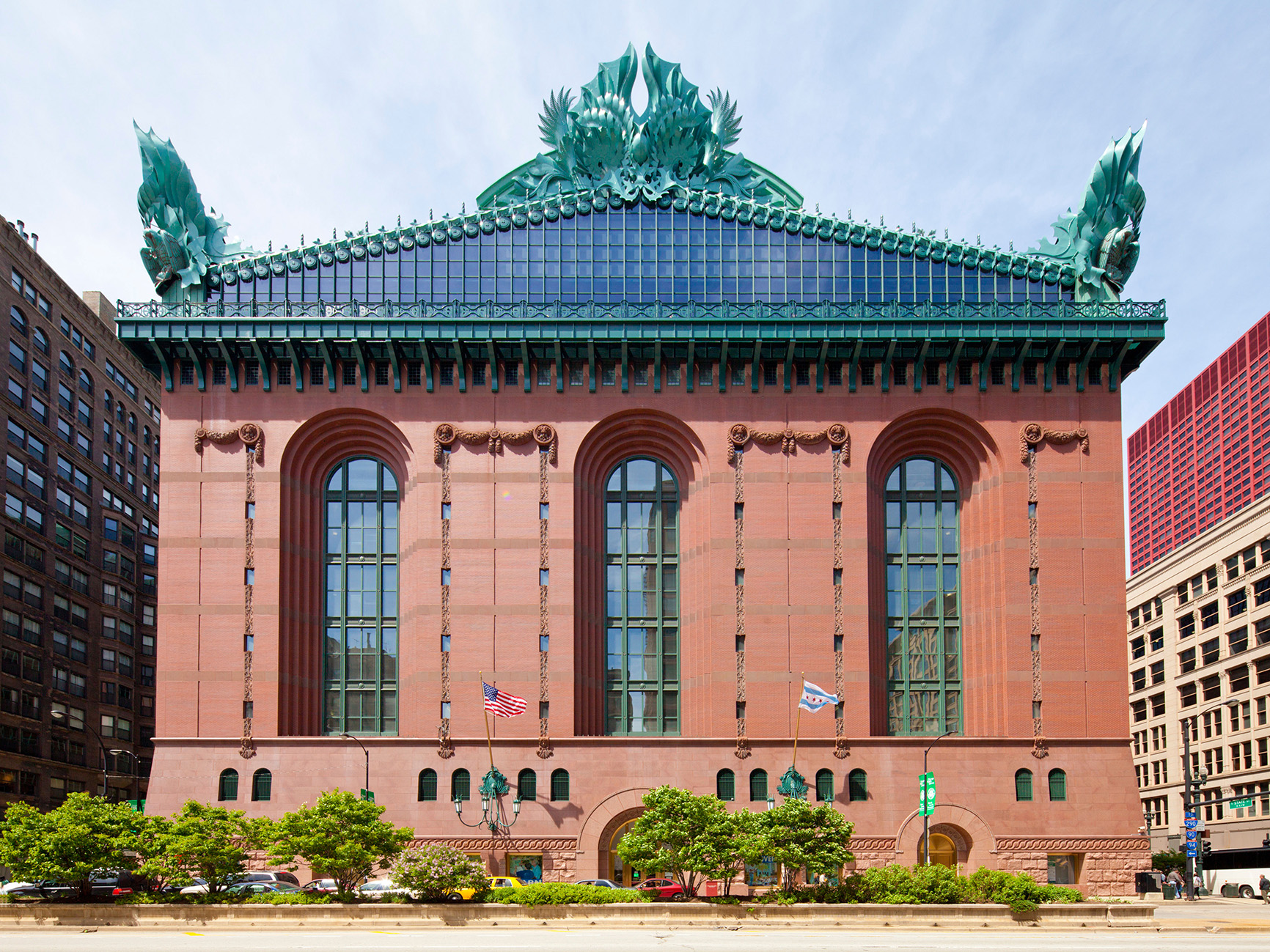
Hammond, Beeby & Babka: Harold Washington Library Center; south and east facades of building, 400 South State Street, Chicago, IL (1991)
NiKreative / Alamy
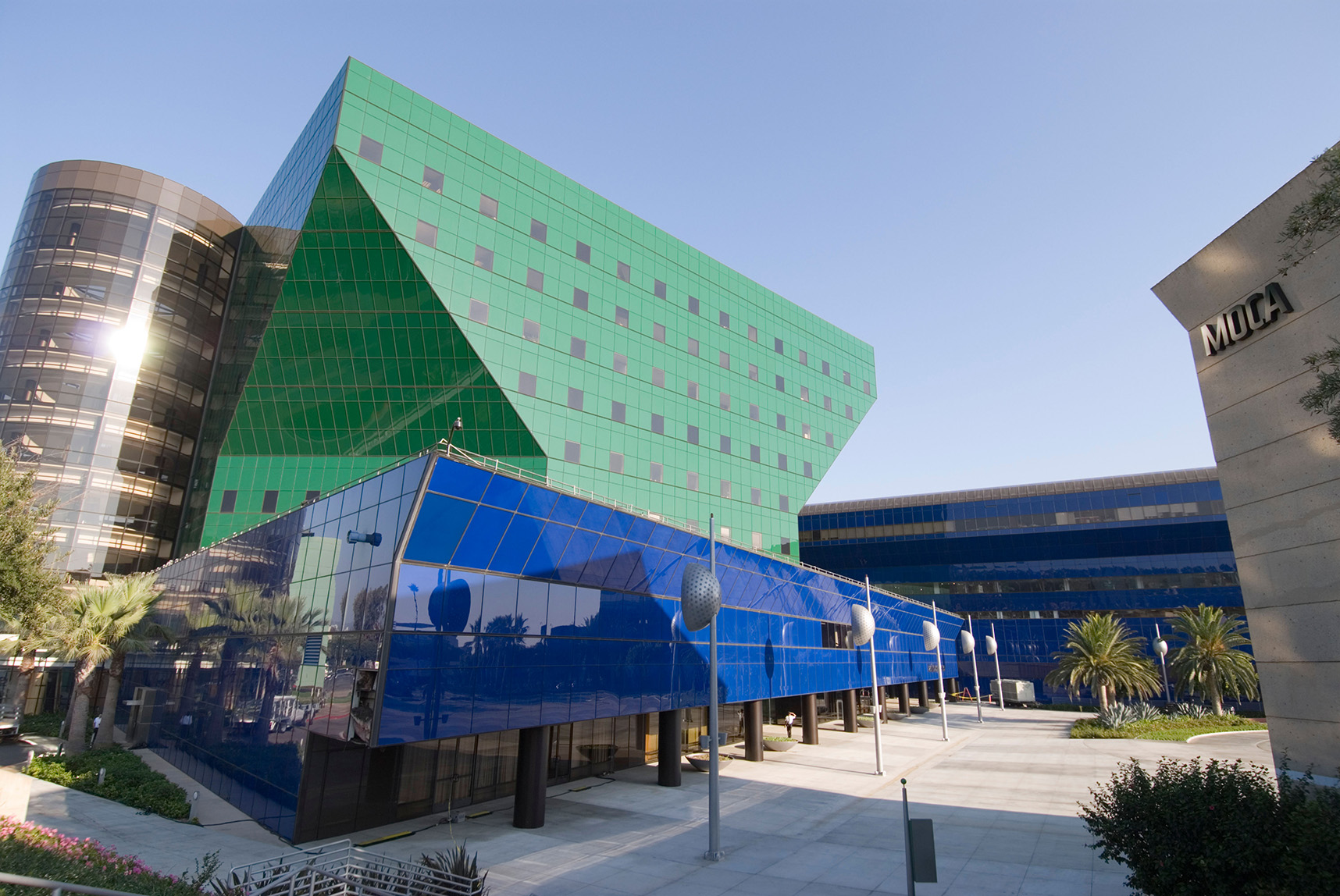
Cesar Pelli & Associates: Pacific Design Center; overview of Pelli building, 8687 Melrose Avenue, West Hollywood, CA (1988)
Mark A. Johnson / Alamy
Here are some links to the practice websites of some prominent architects who have been associated with the Post-Modern movement, which you may also find of interest:
Controversy
It is fair to say that Post-Modern architecture has aroused a very considerable degree of critical and theoretical controversy over the past few decades, with there having been at least as many detractors as advocates for this new style. Here are some links to recent critical articles – both for and against Post-Modern architecture – which you may also find of interest:
- Article by Simon Jenkins on the Guardian website
- Post-Modernism timeline on the WTTW website
- An essay asking the question ‘Has Postmodernism Killed Modern Architecture?’ on the Academia.edu website
- An article entitled ‘Three Buildings That Show Power Means Postmodernism’ on the Architect Magazine website
Of these perhaps the most pertinent is that by Simon Jenkins. Jenkins, who served as Chairman of the UK National Trust for the preservation of historic buildings from 2008 to 2014, has been a relentless critic of modern, Modernist, and indeed Post-Modernist architecture. Yet here he seems almost to be echoing Jencks in his earlier condemnation of late Modernism, and to be appealing, like Jencks, for a new style of architecture which will acknowledge the very factors which Modernism sought to erase – and which, according to Jencks and Venturi, Post-Modernism is designed to embrace. As Jenkins concludes by observing, with regard to the popular response to Modernist architecture across Europe:
‘They denied modernism’s odious utopianism. They refused to live as they were ordered. They hated glass buildings. They did not buy abstract art or listen to musique concrète. They refused to do mass callisthenics. They turned their back on “less is more” in favour of a humane environment and courtesy towards the past. They are doing so to this day. But think of the damage that was done …’
Optional activity: Jenkins’ dismissal of Modernist architecture
You may like to consider the validity of Jenkins’s dismissal of Modernist architecture – as well as the irony of such a vehement critic of Post-Modernism himself arguing for ‘courtesy towards the past’ in contemporary architecture.
Were Venturi and Jencks in fact making this same plea? Or were they perhaps arguing that contemporary architecture ought rather to absorb forms and motifs from contemporary popular culture?
Once again, you should share your thoughts with your fellow students via the Post-Modernism forum.